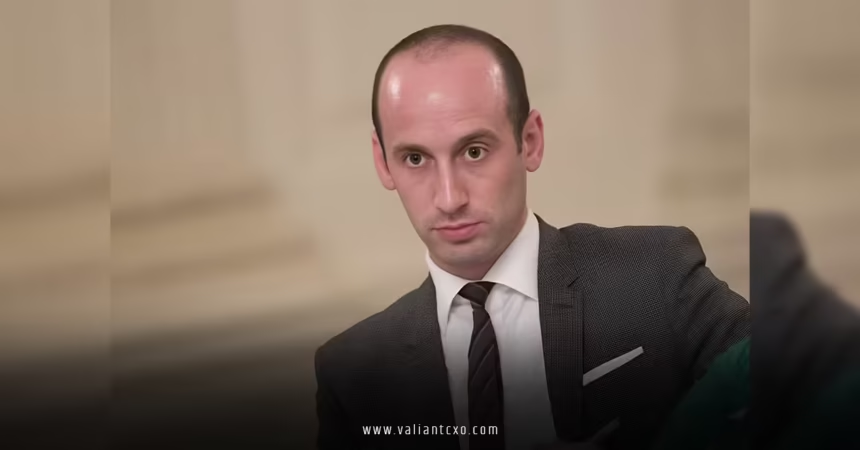What does plenary authority mean for presidential powers in 2025? Imagine you’re the captain of a massive ship in stormy seas— you’ve got the wheel, the maps, and the final say on every turn, without anyone second-guessing your calls mid-crisis. That’s the essence of plenary authority in the hands of the U.S. President, but dialed up to eleven in a year like 2025, where political tempests rage from border skirmishes to urban unrest. As we navigate this pivotal moment post-2024 election, with Donald Trump back in the Oval Office, this unchecked executive muscle isn’t just legalese; it’s the spark igniting debates over democracy’s guardrails. Buckle up—I’m about to unpack how this absolute power plays out, why it’s exploding in headlines, and what it spells for your daily life. We’ll dive deep, no fluff, because understanding this could change how you view the next four years.
The Core of Plenary Authority: Breaking It Down Simply
Let’s start at square one. What does plenary authority mean for presidential powers in 2025? At its heart, plenary authority is like having a golden key that unlocks every door in a fortress—no questions asked, no appeals court waiting in the wings. Derived from the Latin “plenus,” meaning full or complete, it grants the holder total, unreviewable control over a specific domain. Think of it as the Constitution’s way of saying, “In this sandbox, you’re the only kid allowed to build castles… or knock them down.”
But here’s the kicker: in American governance, true plenary powers are rare birds. The framers didn’t hand out blank checks willy-nilly; they balanced them with checks from Congress and the courts. For the president, this shows up in pockets like the pardon power—Article II, Section 2 lets you wipe slates clean for federal crimes, no ifs or buts. Ford pardoning Nixon? That’s plenary in action, a get-out-of-jail-free card that’s ironclad and irreversible.
Why does this matter now, in 2025? With tensions boiling over immigration raids and protest crackdowns, Trump’s team is invoking plenary vibes to justify swift military moves. It’s not abstract—it’s troops on streets, governors sidelined, and a nation holding its breath. Rhetorical question time: If the president can act like a solo monarch in emergencies, where do we draw the line before it blurs into something scarier?
Origins in the Constitution: A Framers’ Gamble
Peel back the layers, and plenary authority roots deep in the Constitution’s soil. The executive branch got Article II as its playground, vesting “the executive Power” in one person—the president. But plenary isn’t blanket coverage; it’s targeted. The pardon clause? Pure plenary, born from English common law but Americanized to prevent royal abuses. Madison and Hamilton hashed this out in the Federalist Papers, arguing it prevents legislative overreach while keeping the chief exec humane.
Fast-forward to 2025: These origins feel eerily relevant. Trump’s deployments echo Lincoln’s Civil War maneuvers, where plenary stretched like taffy to suspend habeas corpus. Yet, unlike 1861, today’s tech amplifies everything—drones overhead, social media swarms. What does plenary authority mean for presidential powers in 2025 if it’s less about quill pens and more about real-time command centers?
Everyday Analogies: Plenary Power in Your World
To make this stick, picture your boss at work. Normally, they consult HR for big calls, but in a plenary setup? They fire, hire, and pivot the whole company solo—no board meeting required. That’s presidential plenary: efficient in crises, terrifying in misuse. In 2025, as Trump federalizes National Guard units against local protests, it’s like that boss calling in security to “restore order” at a team offsite gone wild.
Engaging, right? But let’s burst the bubble: This power isn’t infinite. Courts can nibble at edges, Congress can claw back via funding. Still, in the heat of 2025’s divides, plenary feels like a loaded gun on the dashboard—handy for emergencies, hazardous if forgotten.

Historical Milestones: How Plenary Powers Evolved
History isn’t a dusty tome; it’s the blueprint for today’s power plays. What does plenary authority mean for presidential powers in 2025 without glancing backward? We’d miss the scars and triumphs that shaped it.
From Founding Fathers to Civil War Command
The framers tiptoed around absolute power, scarred by King George III’s tantrums. Yet, they baked in plenary for exigencies. Washington’s neutrality proclamation in 1793? Early flex of executive muscle, unchallenged because plenary shielded foreign affairs calls.
Enter Lincoln: 1861’s rebellion tested limits. He blockaded Southern ports sans congressional nod, claiming plenary under commander-in-chief duties. Chief Justice Taney cried foul in Ex parte Merryman, but Lincoln plowed on—saving the Union, arguably. Analogy alert: It’s like a surgeon mid-operation ignoring the anesthesiologist’s qualms; necessary, but the ethics board sues later.
By World War II, FDR’s internment of Japanese Americans stretched plenary into dark territory, later deemed unconstitutional. These pivots teach us: Plenary thrives in fog-of-war moments but wilts under peacetime scrutiny.
Post-War Shifts: Cold War and Beyond
The Cold War supercharged it. Truman’s steel mill seizure in 1952? Plenary overreach, slapped down by the Supreme Court in Youngstown Sheet & Tube Co. v. Sawyer. Justice Jackson’s tiers—maximum power when Congress backs you, minimum when they don’t—became gospel. Nixon’s Watergate tapes? Pardon power’s plenary shield, but public fury eroded trust.
Into the 21st century, Bush’s post-9/11 detentions blurred lines, with Guantanamo as plenary’s shadowy twin. Obama droned on with targeted strikes, inheriting that latitude. What does plenary authority mean for presidential powers in 2025? It’s this lineage—evolving from rebellion-queller to border-enforcer, always one scandal from reform.
2024 Echoes: Setting the 2025 Stage
The 2024 election was a plenary powder keg. Trump’s campaign vows—mass deportations, urban “cleanups”—hinted at Insurrection Act invocations. Victory in November 2024 catapulted these into reality by January 2025. Early moves? Deploying Guard to Texas borders, overriding Abbott’s hesitations. Critics howl “authoritarian,” fans cheer “decisive.” History whispers: Every era’s plenary pivot starts with promise, ends in peril.
Plenary Authority in Action: Military and National Guard in 2025
Now, the meat of 2025’s drama. What does plenary authority mean for presidential powers in 2025 when troops march on home soil? It’s the Insurrection Act’s ghost, rattling chains louder than ever.
The Insurrection Act: Plenary’s Domestic Sword
Enacted in 1807, this law hands presidents a plenary hammer for “insurrections” or “obstructions” to federal law. No governor consent needed; deploy active-duty or federalized Guard for arrests, searches—full law enforcement kit. Eisenhower used it for Little Rock integration; Bush for LA riots. Plenary here means swift, unilateral action, bypassing Posse Comitatus Act’s military policing ban.
In 2025? Trump’s June order: 4,000 Guard to LA amid immigration protest fury. Courts temporized with injunctions, but the Act’s vagueness— “domestic violence”?—lets plenary slip through cracks. Imagine riots in Portland; Trump federalizes Oregon’s Guard, Miller touts Title 10 as backup. That viral freeze on CNN? Gold for memes, grit for governance.
Title 10 and National Guard: The Plenary Puzzle
Title 10 organizes the armed forces, granting presidents command over federal troops. Plenary? Sort of—deploy abroad unchecked, but domestic? Tethered to Insurrection Act. Miller’s claim of “plenary authority” under Title 10 sparked backlash; it’s not absolute, laced with congressional strings like the 1878 limits post-Reconstruction abuses.
2025 twist: Memphis deployment on September 15, 2,000 Guard shielding feds from unrest. Governors sue, alleging overreach, but plenary’s allure? Speed. In a hyper-connected era, delays cost lives—or elections.
Rhetorical nudge: If plenary lets a president play general in your backyard, shouldn’t we all brush up on the rulebook?
Checks and Balances: Taming the Beast
No plenary is truly unchecked. Congress can repeal the Insurrection Act—bills floated in June 2025 by Warner and Deluzio aim to add sunset clauses, governor vetoes. Courts? Youngstown’s shadow looms; a 2025 Portland injunction halted 200 troops temporarily.
Yet, in crises, inertia favors the executive. What does plenary authority mean for presidential powers in 2025? A high-wire act—empowering yet precarious, demanding vigilant citizens.
Broader Implications: Plenary Power’s Ripple Effects
Zoom out: Plenary isn’t just troops; it’s the president’s toolkit reshaping society.
Immigration and Borders: Plenary’s Border Wall
Shared plenary with Congress over immigration—rooted in sovereignty—lets Trump ramp up raids unchecked. 2025’s LA surge? Echoes Arizona v. United States (2012), affirming federal primacy. Metaphor: It’s a dam bursting; states splash, feds flood.
Pardons and Accountability: The Ultimate Getaway
Plenary pardons? Trump’s 2025 flurry—January 6 allies, border agents—shields allies, stokes division. Like a chess king castling to safety, it evades checkmate but invites scrutiny.
Foreign Affairs: Plenary’s Global Gambit
Commander-in-chief plenary shines abroad—drone strikes, tariffs sans vote. In 2025, amid China tensions, it’s a wildcard. Analogy: Playing poker with the nation’s chips, no fold option.
What does plenary authority mean for presidential powers in 2025 overall? Empowerment laced with peril, demanding we stay woke.
Navigating the Future: Reforms and Real Talk
As 2025 unfolds, reform whispers grow. Bipartisan pushes for Insurrection Act tweaks—requiring congressional notice within 48 hours—aim to clip plenary wings without grounding the eagle.
Personally? I’ve watched these cycles; they test our republic’s resilience. You, reader—vote, litigate, converse. Plenary thrives on apathy; starve it with engagement.
In wrapping this odyssey, what does plenary authority mean for presidential powers in 2025? It’s the Constitution’s double-edged sword—vital for velocity in volatility, venomous if wielded wildly. From Lincoln’s grit to Trump’s grit, it underscores: Power unchecked is power unchained. But with vigilant branches and buzzing public square, we keep it leashed. Dive into the fray; your voice echoes louder than you think. Stay curious, stay critical—democracy’s not a spectator sport.
FAQs
What does plenary authority mean for presidential powers in 2025 in simple terms?
It’s the president’s absolute, no-review-needed control over key areas like pardons or military deployments. In 2025, think Trump fast-tracking Guard to hotspots without governor OKs—efficient, but eyebrow-raising.
How has the Insurrection Act shaped plenary authority under Trump in 2025?
This 1807 law gives presidents plenary-like leeway to deploy troops domestically for unrest. Trump’s 2025 uses, like in Memphis, highlight its speed but spark reform calls to add checks.
Are there limits to plenary authority for presidential powers in 2025?
Yes—Congress can defund, courts can enjoin, as seen in Portland’s temporary block. What does plenary authority mean for presidential powers in 2025? Potent, but not omnipotent.
Why is Stephen Miller’s 2025 Title 10 claim controversial?
He touted it as granting Trump plenary over forces, but experts say it’s bounded by laws like Posse Comitatus. The CNN freeze? A viral reminder: Words wield weight.
What reforms could change plenary authority for future presidents post-2025?
Bills like the Insurrection Act of 2025 propose time limits and notifications. They aim to preserve crisis response while curbing what feels like kingly overreach.
For More Updates !! : valiantcxo.com


